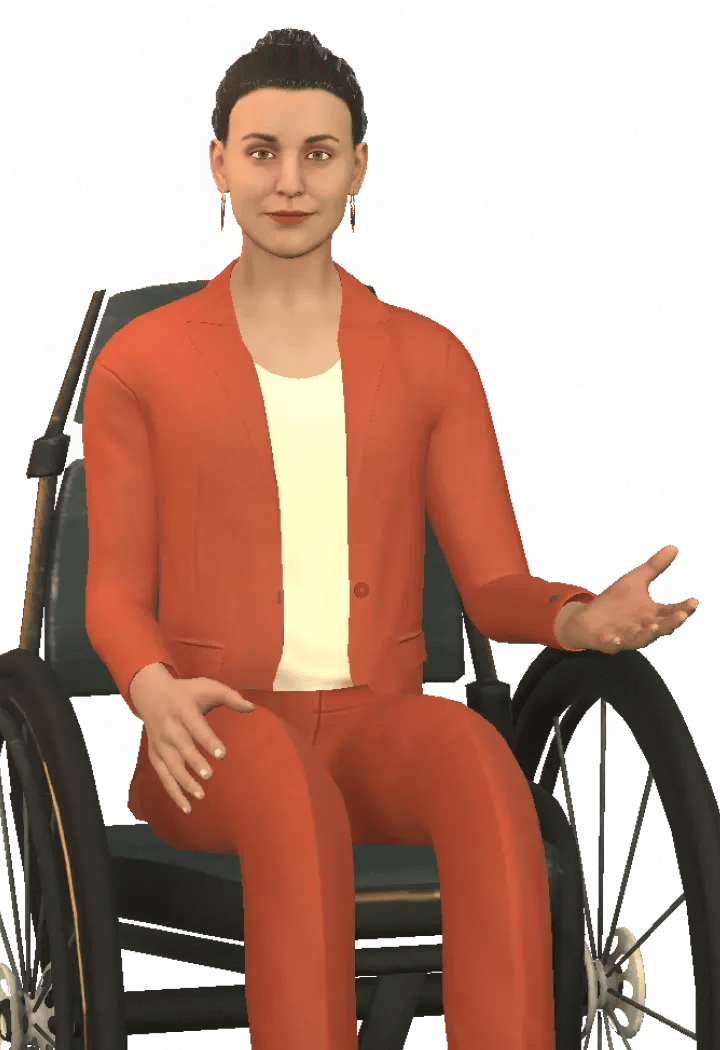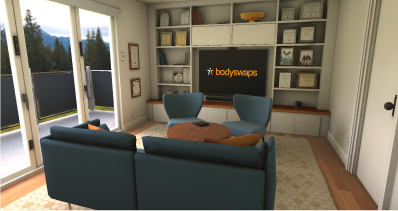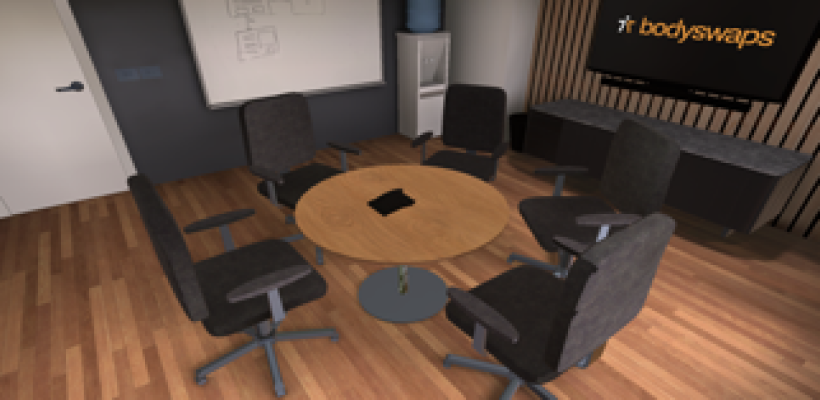Two Strategies For Answering (Almost) Any Question
Tutor notes
Often, people think the strongest interview strategy is to research the ‘best’ answers to common questions and commit them to memory. But this is risky – not only because the interviewer might not even ask those questions. If other candidates have done the same thing, how can you stand out from the crowd?
This module provides the answer in two storytelling techniques: C.A.R. (Context, Action Result) and S.T.A.R. (Situation, Task, Action, Result). These two structures help make your answers personal, memorable, and convincing, and here, the learner explores how to use them to formulate winning interview responses.
About this resource
Key learner outcome and goals
Learning outcome
Demonstrate suitability for the role using structured interview techniques
Learning goals
- Preparing authentic stories
- The secret to great storytelling
- Communicating clearly
A word about terminology
As a medium, virtual reality is not best suited to didactic teaching methods.
However, our intention is that all Bodyswaps modules follow a student-centred constructivist pedagogy. This means creating rich experiences in which learners can explore key concepts and ideas and reach their own conclusions.
This is why our documents speak in terms of learning goals and outcomes, rather than measurable ‘learning objectives’ (a la Bloom’s Taxonomy) per se.
Module structure
The complete journey takes the learner through four interactive topics led by virtual coaches Ashley and Abeeku, as well as ancillary activities such as onboarding, self-reflection, and the exit survey.
It is a linear experience, meaning the learner will be guided step by step through all the activities by the coaches. We recommend that learners fully interact with each activity to get the full benefit.
It is estimated that each topic will take the learner approximately 5-10 minutes to complete, although completion times vary depending on whether the learner chooses to repeat topics to explore different options (encouraged) or to fine-tune their freeform responses.
Learner journey
.svg)
.svg)
.svg)
.svg)
.svg)
.svg)
Freeform interaction
.svg)
.svg)
.svg)
Characters
.webp?width=720&height=1050&name=abeeku%20(1).webp)

Ashley
Virtual coachLearning environments

Tutor room - Bodyswaps HQ
Breakout room

Meeting room
Build a story bank
Anyone can claim to have a particular strength, but it won’t get you very far in an interview unless you can prove it with some well-thought through examples. This is where your story bank comes in.
Starting with the strengths you identified in Exercise 2, think about 3-5 true stories that illustrate those qualities. These might relate to a meaningful experience or collaboration at work, a challenge that you overcame, an award that you received, or an achievement that you’re proud of.
The more stories you put into your story bank, the easier you’ll find it to think on your feet and answer whatever questions the interviewer throws at you in a winning way.
In this module, you’ll discover how to turn those stories into your most compelling evidence that you’re the best person for the job.
Purpose
Familiarise the learner with the Bodyswaps environment and prepare them for the experience to come
Location
Characters
Ashley and Abeeku
Duration
3:00
Journal
The first time learners use Bodyswaps, this onboarding sequence familiarises them with the features of the app, takes them through an avatar selection and embodiment activity, and prepares them for the experience to come.
In the onboarding, learners will:
- Find out how this training is different from the rest
- Select their avatar
- Discover their virtual journal
- Learn how to navigate and use the tools and settings
Purpose
Introduce the module and reflect on current confidence levels before beginning the activities
Location
Characters
Journal
Duration
To begin the module, virtual coaches Ashley and Abeeku explain that a common mistake people make is thinking they should memorise model answers to interview questions. A far more effective strategy, which they’ll show the learner throughout the training, is to use a structured interview technique. They have two to demonstrate to the learner: the C.A.R. (Context, Action, Results) technique and the S.T.A.R. (Situation, Task, Action, Results) technique.
They set out the goals for the module, and introduce the different activities they’ll be guiding the learner through in the module.
Then, they invite the learner to complete a short likert-style self-reflection survey, to indicate how confident they feel about the following key learning points:
- Knowing what to say
- Structuring their answers for the biggest impact
- Communicating with confidence
These self-reflection questions will be repeated in the debrief at the end, to assess how the learner’s confidence levels have changed.
Note: If you wish to receive data about how the learner’s confidence levels have changed as a consequence of the training, It is important that they complete this introduction and the debrief at the end.
Purpose
Start preparing stories for your story bank
Location
Tutor room
Characters
Ashley and Abeeku
Journal
Duration
Anyone can claim to have a particular strength in interviews, but you’ve got to be prepared to back this up with well-thought out examples. Building up a ‘story bank’ helps you do exactly that.
For this freeform activity, the learner practises sharing stories that illustrate their strengths, such as a time they collaborated on a project or overcame a challenge. They don’t need to follow C.A.R. or S.T.A.R. for this – it’s purely to get them thinking of relevant examples that back up their answers and start building up their story bank.
They’ll receive some prompts on screen and in their journal to help them come up with more stories, and they can tell as many as they like.
This is helpful practice for real life, as the more the learner can put into their story bank, the easier they’ll find it to think on their feet and answer questions when going into real interviews.
Purpose
Introduce structured interview techniques
Location
Breakout room
Characters
Abeeku and Ashley
Journal
Duration
Ashley and Abeeku tell the learner the secret to great storytelling: using a structured technique. Formulating interview answers with C.A.R or S.T.A.R. helps you to showcase your work experience in a way that leaves the interviewer with no doubt that you’re a great fit.
They ask the learner which one they want to learn.At this point, the learner is shown a popup in which they can select either C.A.R. or S.T.A.R., each of which will move them to the relevant subtopic. Once they’ve completed the subtopic for C.A.R., they can then move onto the one about S.T.A.R., and vice versa, if they wish.
Purpose
Learn about the C.A.R. technique and see it in action
Location
Hangout area, meeting room
Characters
Abeeku and Ashley
Journal
Duration
If the learner chooses to learn the C.A.R. technique, Ashley and Abeeku introduce how it works. They walk the learner through each step:
- Context - setting the stage, such as what your role was, where you worked, what the situation or problem was, and so on.
- Action - what you did to address the challenge or opportunity, what ideas you had, what initiative you took, etc.
- Result - how did your actions pay off? What did you achieve? How did it benefit the team or the wider company?
C.A.R. can be applied to almost any question. The trick is to think about what the interviewer wants to learn from your answer, and then use C.A.R. to build it around that.
Next, the scene moves to the meeting room, where Ashley and Abeeku show this in action. The learner plays the role of the interviewer, and can choose from various questions that they’d like to see Abeeku answer with the C.A.R. framework, such as:
- What’s the biggest mistake you’ve made?
- Do you believe in bigfoot?
- What is your greatest accomplishment?
- If you were a box of cereal, what would you be?
- What do you and your boss disagree about?
As Abeeku shares his answer, a TV screen behind him highlights whether he is describing the context, action, or result. Ashley follows up with insights into how Abeeku’s responses helped him craft compelling answers – including difficult or curveball questions that can often be hard to answer.
The learner is prompted to ask Abeeku a minimum of three questions, but they can ask up to nine if they wish to see him demonstrate more examples.
Purpose
Learn about the S.T.A.R. technique and see it in action
Location
Meeting room
Characters
Abeeku and Ashley
Journal
Duration
If the learner chooses to learn the S.T.A.R. technique, Ashley and Abeeku introduce how it works. They walk the learner through each step:
- Situation - setting the stage, such as what your role was, where you worked, what the situation or problem was, and so on.
- Task - the task you were trying to complete: an assignment from a teacher or manager, or a goal you set yourself.
- Action - what you did to address the challenge or opportunity, what ideas you had, what initiative you took, etc.
- Result - how did your actions pay off? What did you achieve? How did it benefit the team or the wider company?
S.T.A.R. can be applied to any question that starts ‘Tell me about a time when you…’ It provides a perfect framework for a story that demonstrates you have the attitude and experience that the interviewer is looking for.
Next, Ashley and Abeeku show this in action. The learner plays the role of the interviewer, and can choose from various questions that they’d like to see Abeeku answer with the S.T.A.R. framework:
- Tell me about a time when you responded well to a challenge.
- Tell me about a time when you made a mistake.
- Tell me about a time when you helped someone else to shine.
As Abeeku shares his answer, a TV screen behind him highlights whether he is describing the situation, task, action, or result. Ashley follows up with insights into how Abeeku’s responses helped him craft compelling answers that demonstrate the qualities the interviewer is looking for.
The learner must ask Abeeku a minimum of one question to move on, but they can ask all three if they wish to see him demonstrate more examples.
Purpose
Practise using structured interview techniques
Location
Meeting room
Characters
Abeeku and Ashley
Journal
Duration
Now that the learner has seen examples of C.A.R. and added stories to their storybank, this is their chance to practise using the technique for themselves.
For this final activity, Ashley and Abeeku invite the learner to answer some interview questions, and remind them to draw from the storybank they just built up.
There are six interview questions in total that the learner can answer, but it’s up to them how many they want to attempt.
The learner delivers their answer in their own voice, and after speaking they can swap bodies with one of the coaches to listen back to their response. Then, AI-enabled analytics will provide some feedback about their delivery, including speaking speed, filler words, hand gestures, eye contact, and their use of the C.A.R technique.
Ashley and Abeeku also offer to give a model answer for each question, if the learner would like to refresh their memory of how C.A.R. or S.T.A.R. look. And if the learner would like to keep practising, the learner can retry the question or ask the coaches to give them a new one.
Purpose
Debrief the learner upon completion of the training and prompt self-reflection
Location
Tutor room
Characters
Abeeku and Ashley
Journal
N/A
Duration
1:00
Abeeku and Ashley congratulate the learner for completing their journey through this course, and provide some closing thoughts on how techniques like C.A.R. and S.T.A.R. help you stand out with well-crafted, story-driven interview answers.
Now, they’re invited to take the same Likert-style survey from the beginning, to encourage the learner to reflect and self-report on their confidence levels following completion of the training.
The questions relate to how confident they now feel about the key learning points:
- Knowing what to say
- Structuring their answers for the biggest impact
- Communicating with confidence
Purpose
Assess the effectiveness of the training itself
Location
Characters
Journal
Duration
Before the learner leaves the module, they are asked to complete a short survey about their experience.
This survey is not compulsory, but the data helps us to assess the effectiveness of our product and identify any areas that need improvement. Clients also find it beneficial when assessing ROI.
They are asked to mark whether they agree or disagree with the following statements, on a 10 point scale:
- I would recommend this experience to others
- The experience helped me identify elements I could improve upon
- I now have a better understanding of how to manage interview anxiety
Practice, practice, practice!
Find a friend or someone who is also looking for a job and take it in turns to ask each other interview questions.
Practise answering using the C.A.R. technique and give one another feedback on how you did.
Or, if you’re practising alone, record yourself using your phone and play it back, making notes on how you could improve your answer.
Rinse and repeat!
